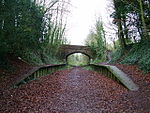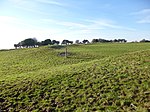Spetisbury

Spetisbury () is a village and civil parish in north Dorset, England, situated on the River Stour and the A350, four miles (six kilometres) southeast of Blandford Forum. According to the Domesday Book of 1086, the village had 30 households. According to the 2011 census the parish had 224 households and a population of 555. According to the 2021 census, the parish had 250 households and a population of 590.Spetisbury is a linear settlement, adjacent to the A350 road, which was included in Dorset County Council's response to the Major Roads Network (MRN) consultation, leading to some anticipation of a bypass of Spetisbury and neighbouring Charlton Marshall. A large solar farm was commissioned near Spetisbury in 2023 to provide energy for the City of London Corporation.Spetisbury is twinned with Le Vast, a village in the Manche department of Normandy, France. The Manche department is itself is twinned with Dorset.
Excerpt from the Wikipedia article Spetisbury (License: CC BY-SA 3.0, Authors, Images).Spetisbury
High Street,
Geographical coordinates (GPS) Address Nearby Places Show on map
Geographical coordinates (GPS)
| Latitude | Longitude |
|---|---|
| N 50.8212 ° | E -2.1259 ° |
Address
High Street
High Street
DT11 9DJ
England, United Kingdom
Open on Google Maps










